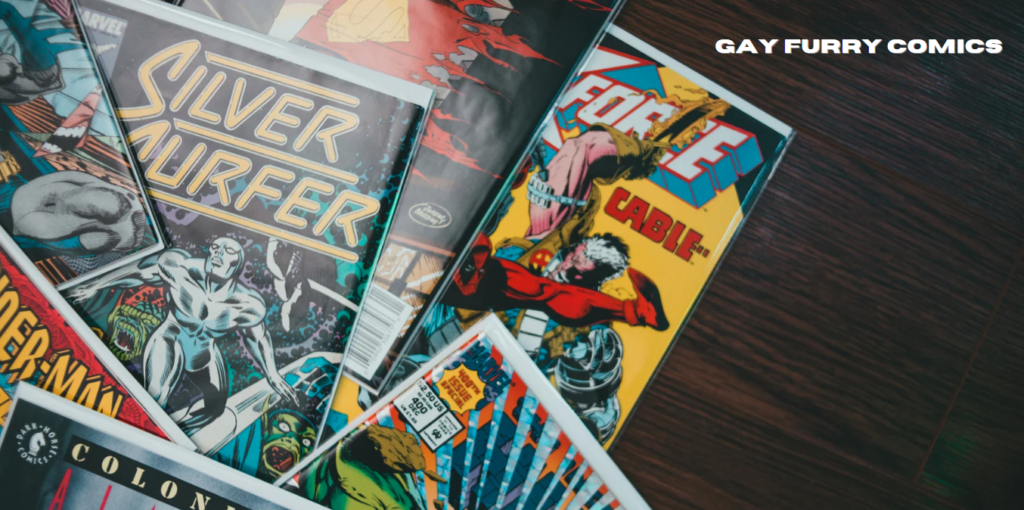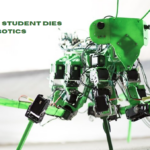Introduction
In the vast and colorful world of comics, the genre of gay furry comics has carved out a niche that is both vibrant and deeply impactful. Combining elements of fantasy, anthropomorphism, and LGBTQ+ themes, these comics offer a unique blend of storytelling that appeals to a diverse audience.
This article aims to explore the rich history, cultural significance, and artistic innovation of gay furry comics, while also providing insights into their community and their role in contemporary pop culture. Whether you’re a seasoned fan or new to the genre, this comprehensive guide will give you a deeper understanding of what makes gay furry comics so special.
What Are Gay Furry Comics?
Gay furry comics are a subgenre of furry comics that specifically focus on LGBTQ+ themes, with a particular emphasis on gay relationships. These comics feature anthropomorphic animals—creatures with human-like characteristics—who navigate various aspects of life, including love, identity, and societal challenges. The anthropomorphism in these comics often allows for a more imaginative exploration of complex themes, providing a space where taboo or difficult topics can be addressed in a less confrontational way.
The Appeal of Gay Furry Comics
The appeal of gay furry comics lies in their unique ability to combine elements of fantasy with relatable human experiences. For many readers, these comics offer a form of escapism while also providing representation that may be lacking in mainstream media. The furry characters, often depicted with exaggerated features and colorful fur, allow for a playful yet poignant exploration of issues like sexuality, gender identity, and acceptance.
Moreover, the drama, humor, and emotional depth found in gay furry comics make them a compelling read. Whether it’s a heartwarming love story between two wolf characters or a dramatic tale of self-discovery featuring a fox protagonist, these comics are rich with narratives that resonate on multiple levels.
The History of Gay Furry Comics
Early Beginnings
The roots of gay furry comics can be traced back to the broader furry fandom, which began to take shape in the 1980s. The furry community, known for its interest in anthropomorphic animals, quickly embraced comics as a medium to express their creativity and explore complex themes. Early furry comics often contained subtle hints of LGBTQ+ themes, but it wasn’t until the late 1990s and early 2000s that explicitly gay furry comics began to emerge.
The Rise of Online Communities
The advent of the internet played a crucial role in the growth of gay furry comics. Online communities such as Fur Affinity, DeviantArt, and Tumblr provided platforms for creators to share their work and connect with like-minded individuals. These communities fostered a sense of belonging and allowed for the free exchange of ideas, leading to a flourishing of gay furry comics that tackled a wide range of topics.
Key Milestones
Some of the key milestones in the history of gay furry comics include the publication of notable works such as “Circles,” “Fur-Piled,” and “Blotch’s ‘Nordguard’.” These comics not only pushed the boundaries of storytelling within the furry community but also gained recognition outside of it, bringing more visibility to the genre.
The Cultural Significance of Gay Furry Comics
Representation and Identity
Representation is a central theme in gay furry comics. For many LGBTQ+ individuals, these comics provide a rare opportunity to see themselves reflected in the media they consume. The anthropomorphic characters serve as stand-ins for human experiences, allowing readers to explore issues related to identity, sexuality, and relationships in a safe and imaginative space.
In a world where LGBTQ+ representation is still lacking in mainstream media, gay furry comics offer a form of validation and affirmation. They show that love, in all its forms, is universal and deserving of celebration. This representation is particularly important for young readers who may be struggling with their own identities, as it provides them with role models and stories that resonate with their experiences.
Challenging Norms and Stereotypes
Gay furry comics often challenge societal norms and stereotypes, both within the LGBTQ+ community and in the broader culture. By depicting relationships and characters that defy traditional expectations, these comics encourage readers to question their assumptions and consider new perspectives. Whether it’s a comic that explores non-binary identities or one that challenges the notion of what it means to be “masculine,” gay furry comics are at the forefront of pushing boundaries and promoting inclusivity.
The Intersection of Fantasy and Reality
One of the unique aspects of gay furry comics is their ability to blend fantasy with reality. The anthropomorphic characters, with their human-like emotions and experiences, allow for a deeper exploration of real-world issues. For example, a comic about a lion character struggling with his sexual orientation might be set in a fantastical world, but the emotions and challenges he faces are deeply relatable to readers.
This blending of fantasy and reality creates a powerful narrative tool that can address difficult topics in a more accessible way. It allows readers to engage with the story on multiple levels, enjoying the imaginative elements while also connecting with the underlying themes.
Notable Gay Furry Comics and Creators
“Circles” by Andrew French, Scott Fabianek, and Steve Domanski
“Circles” is one of the most well-known gay furry comics, and for good reason. The comic, which ran from 2001 to 2008, tells the story of a group of gay friends living in Boston. Through its characters—a mix of anthropomorphic animals including a bear, a rabbit, and a wolf—the comic explores themes of love, friendship, and identity. “Circles” is praised for its nuanced portrayal of LGBTQ+ life and its ability to tackle serious issues with humor and heart.
“Fur-Piled” by Leo Magna
“Fur-Piled” is another iconic gay furry comic that has left a lasting impact on the genre. Created by Leo Magna, the comic follows the life of a young fox named Dev and his friends as they navigate the ups and downs of relationships, work, and self-discovery. What sets “Fur-Piled” apart is its realistic depiction of gay life, complete with all its joys and challenges. The comic’s blend of drama, romance, and slice-of-life storytelling has made it a favorite among fans.
“Nordguard” by Blotch
“Nordguard” is a more recent entry into the world of gay furry comics, but it has quickly become a standout. Created by the artist duo Blotch, “Nordguard” is set in a harsh, arctic world where a group of anthropomorphic animals must band together to survive. While not exclusively focused on LGBTQ+ themes, “Nordguard” features queer characters and relationships, making it an important work within the genre. The comic is also notable for its stunning artwork and epic storytelling.
The Role of Gay Furry Comics in the Furry Fandom
A Space for Expression and Community
Gay furry comics play a vital role within the broader furry fandom. They provide a space for expression and creativity, allowing both creators and readers to explore their identities and connect with others who share similar experiences. The furry community is known for its inclusivity and acceptance, and gay furry comics are a reflection of these values.
For many fans, these comics are more than just entertainment—they are a way to find community and belonging. Whether it’s through online forums, conventions, or fan art, gay furry comics have inspired a vibrant and supportive subculture within the furry fandom.
The Influence of Gay Furry Comics on Mainstream Media
While gay furry comics remain a niche genre, their influence can be seen in mainstream media. The popularity of anthropomorphic characters in films like “Zootopia” and “The Lion King” is a testament to the appeal of this concept. Additionally, the growing acceptance of LGBTQ+ themes in media has led to more visibility for works that feature queer characters and relationships, including those in the furry genre.
Challenges and Controversies
Despite their positive impact, gay furry comics have not been without controversy. Some critics argue that the sexual content in these comics can be explicit and may not be suitable for all audiences. Additionally, the furry fandom as a whole has faced scrutiny and misunderstanding from those outside the community.
However, fans and creators alike have defended gay furry comics as an important form of artistic expression. They argue that these comics provide a space for exploring complex and often taboo topics in a way that is both meaningful and impactful. Moreover, the diversity within the genre means that there is something for everyone, from lighthearted romance stories to more serious, introspective works.
Creating Your Own Gay Furry Comic: Tips and Insights
Understanding Your Audience
When creating a gay furry comic, it’s important to understand your audience. While the furry fandom is diverse, many readers are drawn to these comics for their representation of LGBTQ+ themes. Consider what your audience is looking for—whether it’s romance, drama, humor, or a mix of all three—and tailor your story accordingly.
Developing Compelling Characters
Compelling characters are the heart of any great comic, and this is especially true for gay furry comics. Your characters should be well-developed, with distinct personalities, motivations, and arcs. Consider how their anthropomorphic traits can enhance their character development—whether it’s a wolf character who embodies strength and loyalty, or a fox character who is clever and cunning.
Balancing Fantasy and Reality
One of the strengths of gay furry comics is their ability to blend fantasy with reality. As a creator, you should strive to find a balance between the two. The fantastical elements of your comic—whether it’s the setting, the characters, or the plot—should serve to enhance the themes and emotions you’re exploring. At the same time, the human experiences at the core of your story should be relatable and grounded in reality.
Art Style and Presentation
The art style of your comic is another important consideration. Gay furry comics are known for their vibrant, colorful art, but there’s a wide range of styles within the genre. Whether you prefer a more realistic approach or something more stylized, your art should complement the tone and themes of your story.
Additionally, consider how you present your comic. Will it be a webcomic, available for free online, or a printed graphic novel? Each format has its own advantages and challenges, so choose the one that best suits your goals as a creator.
The Future of Gay Furry Comics
Growing Acceptance and Visibility
The future of gay furry comics looks bright, with growing acceptance and visibility within both the furry fandom and mainstream media. As society becomes more inclusive, there is likely to be an increasing demand for stories that reflect diverse experiences, including those of LGBTQ+ individuals. Gay furry comics, with their unique blend of fantasy and reality, are well-positioned to meet this demand.
New Voices and Perspectives
As the genre continues to evolve, new voices and perspectives will play a crucial role in shaping its future. With more creators from diverse backgrounds entering the scene, we can expect to see a wider range of stories and characters that push the boundaries of what gay furry comics can be. This diversity will not only enrich the genre but also ensure that it remains relevant and resonant for future generations of readers.
The Impact of Technology
Advances in technology are also likely to influence the future of gay furry comics. With the rise of digital platforms, it has become easier than ever for creators to share their work and reach a global audience. Additionally, new tools and software are making it possible to experiment with different art styles, formats, and storytelling techniques. As technology continues to evolve, it will open up new possibilities for innovation within the genre.
FAQs About Gay Furry Comics
Q1: What makes gay furry comics different from other LGBTQ+ comics?
A1: Gay furry comics are unique in that they feature anthropomorphic characters—animals with human-like traits—who navigate LGBTQ+ themes. This blend of fantasy and reality allows for a more imaginative exploration of identity, relationships, and societal issues, setting them apart from other LGBTQ+ comics.
Q2: Are gay furry comics appropriate for all audiences?
A2: While there is a wide range of content within the genre, some gay furry comics contain explicit material and may not be suitable for younger audiences. However, there are also many comics that focus on themes like love, friendship, and self-discovery without explicit content. It’s important to research a comic before reading to ensure it aligns with your preferences.
Q3: Where can I find gay furry comics to read?
A3: Gay furry comics can be found on various online platforms, including Fur Affinity, DeviantArt, and Webtoon. Some creators also publish their work independently or through small presses. Additionally, conventions like Anthrocon often feature artists and creators who sell their comics in person.
Q4: Can I create my own gay furry comic even if I’m not a professional artist?
A4: Absolutely! Many creators in the furry fandom are self-taught and started out as hobbyists. The most important thing is to have a passion for storytelling and a willingness to improve your skills. Online resources, tutorials, and communities can provide support and guidance as you create your own comic.
Q5: How can I support creators of gay furry comics?
A5: Supporting creators can be done in several ways, such as purchasing their work, commissioning art, or donating through platforms like Patreon. Additionally, sharing their comics and leaving positive feedback can help creators reach a wider audience.
Conclusion
Gay furry comics represent a dynamic and evolving genre that offers both entertainment and meaningful representation for LGBTQ+ individuals.
Through their imaginative storytelling and rich characters, these comics provide a space where readers can explore identity, love, and the complexities of life in a unique and impactful way. As the genre continues to grow and evolve, it will undoubtedly continue to inspire and resonate with audiences around the world.
Whether you’re a longtime fan or new to the world of gay furry comics, there’s something in this genre for everyone. So why not dive in and discover the stories that make this community so special?

















